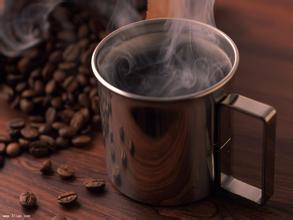Introduction to the sweet and delicious coffee flavor and taste of Lazmus Manor in Colombia
After the founding of the United States, there was a dispute over the location of the capital. The North wants its capital in new York. The South wants the capital to be located in the South. Finally, the United States and North Korea made a decision
Flag of Washington, D.C. Colombia
Flag of Washington, D.C. Colombia
Concession, a new city in the south of the United States not far from the north as the capital of the United States. The location was established by James Madison (1751-1836, fourth president of the United States) and Alexander Hamilton (January 11, 1757-July 12, 1804, one of the drafters of the Constitution and the first Secretary of the Treasury of the United States) under Thomas Jefferson (April 13, 1743-July 4, 1826), third president of the United States. He was also the chief drafter of the American Declaration of Independence. The city was planned as a diamond of 100 square miles. Its actual location on the Potomac River was decided by President Washington, who himself suggested that the U.S. capital be called "Federal City." But on September 9, 1791, the capital of the United States was named Washington. Washington himself rarely visited Washington, though he lived in Mount Vernon, not far from Washington.
Washington was planned by Major Pierre L. Enfant, who also designed the Confederation Hall in New York. the planning at the time
Seal of Washington, D.C., Colombia
Seal of Washington, D.C., Colombia
Based on horse-drawn carriages as the primary means of transportation, Washington's road system is not suited to modern automobile transportation. Washington is currently considered the worst city in the United States for road traffic. 1791-1792 Andrew Ellicott and African-American freeman Benjamin Banneker surveyed the boundaries of the District of Colombia, planting markers every mile. Many of these pillars still exist. October 13, 1792 The foundation stone was laid for the White House. On August 24, 1814, British troops captured the District of Colombia during the War of 1812 and burned most of its public buildings. The American army failed to organize an effective defense and fled after burning down the naval shipyard. British troops burned down U.S. government buildings such as the U.S. Parliament, the White House, and the Treasury. It is generally believed that the British burned Washington in retaliation for the American invasion and the burning of Toronto (then known as York). But British operations were limited to public buildings, while American forces destroyed many homes when they burned Toronto, causing many Canadians to sleep on the streets during the winter. In 1847, the land on the south bank of the Potomac River was returned to Virginia. Washington was a small city inhabited by only a few thousand people until the Civil War. After the outbreak of the American Civil War, due to the rapid expansion of the U.S. government due to the war, Washington residents significantly increased coffee is the pride of Colombia, Colombians like to talk about several things, besides their football once ranked among the best in the world, they are proud of coffee. Coffee in Colombia is a pleasure, not only three times a day essential, streets are full of cafes, customers from morning to night, full of seats. Coffee shops do not say instant, now cooked and sold, miss with delicate porcelain bowl poured, respectfully sent to customers in front of their own free sugar. Indoor aroma pervades, sweet and delicious bowl, slowly taste endless aftertaste, no wonder local people each addicted to it.
At Andicchio University, every office has a small card that says "Coffee Break" and is likely to be hung at the door if the owner is out for a while. This reason seems to be justified, even for executives on duty. At any restaurant in Medellin, coffee is the free drink served to customers after dinner. [1]
Coffee is so deeply ingrained in Colombia that it has become indispensable for writers like García Marquez. One Hundred Years of Solitude, for example, which won him the Nobel Prize for Literature, has coffee in every chapter. Chapter 5 A dose of laudanum is added to the bride's coffee in order to prevent the wedding of the hero, Colonel Aureliano Buendía. To illustrate the colonel's wonder, Chapter 6 describes how "he once survived coffee laced with enough strychnine to poison a horse." [1]
Chapter 7 describes the Colonel's state of mind before he was executed,"neither afraid nor nostalgic, but burning with anguish at the thought that this man's artificial death would prevent him from knowing the end of so many things left undone. Then the cell door opened and the guard came in with a cup of coffee." In The Colonel Who Has No Letters, García Marquez's supposedly favorite novel, he portrays a destitute retired officer whose embarrassment is felt from the outset: "The colonel opens the coffee-box and, sure enough, there is only a spoonful left

Important Notice :
前街咖啡 FrontStreet Coffee has moved to new addredd:
FrontStreet Coffee Address: 315,Donghua East Road,GuangZhou
Tel:020 38364473
- Prev

Introduction to the characteristics of Esmedala Manor Coffee Flavor and Taste Manor in Panama
The Emerald Manor of Panama (La Esmeralda) is located in the corner of the Baru volcano, so most of the coffee beans produced in this area are named after the Baru Mountains. The area around Boquete is scenic, with many leisure hotels, villa, resort and even along the important river Rio Caldera. The Emerald Manor (La Esmeralda) is on the right side of the river, Jaramillo.
- Next

Introduction to the coffee flavor and taste characteristics of the elegant and charming Caesar Louis Manor in Panama
Coffee is grown from 1670 to 1850 meters above sea level, making it one of the two highest coffee farms in Panama (the other estate with these elevations should be Carmen in the Vulcan Valley). At such a high altitude, the low temperature delays the ripening of coffee berries, about a month later than the normal ripening period, while the fertile volcanic soil provides coffee.
Related
- Does Rose Summer choose Blue, Green or Red? Detailed explanation of Rose Summer Coffee plots and Classification in Panamanian Jade Manor
- What is the difference between the origin, producing area, processing plant, cooperative and manor of coffee beans?
- How fine does the espresso powder fit? how to grind the espresso?
- Sca coffee roasting degree color card coffee roasting degree 8 roasting color values what do you mean?
- The practice of lattes: how to make lattes at home
- Introduction to Indonesian Fine Coffee beans-- Java Coffee producing area of Indonesian Arabica Coffee
- How much will the flavor of light and medium roasted rose summer be expressed? What baking level is rose summer suitable for?
- Introduction to the characteristics of washing, sun-drying or wet-planing coffee commonly used in Mantenin, Indonesia
- Price characteristics of Arabica Coffee Bean Starbucks introduction to Manning Coffee Bean Taste producing area Variety Manor
- What is the authentic Yega flavor? What are the flavor characteristics of the really excellent Yejasuffi coffee beans?

